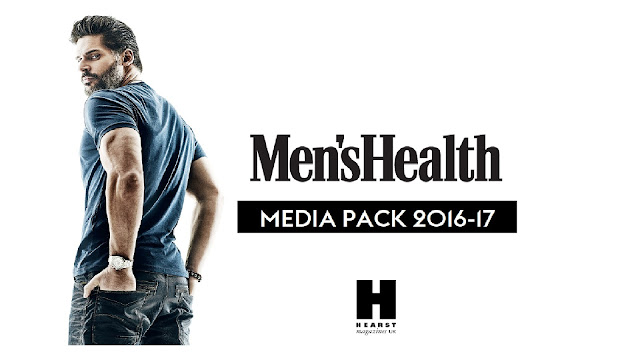MIGRAIN: January assessment learner response
1) Type up your feedback in full.
Mark & grade- 27, B
WWW- A seriously impressive first media assessment for you... it shows you made the right decision switching and now we need to be aiming for A*.
Great command of terminology and theory.
EBI- You know the basics so now we need to add a depth and sophistication to your extended answers. E.g. discussing how the media stirs up moral panics about the media itself...why? To what effect?
Revise PSB... particularly in terms of impact of new technology/digital age.
2) Read the mark scheme for this assessment carefully. Identify at least one potential point that you missed out on for each question in the assessment.
Question 2-
Arguments for PSB i missed out:
3) On a scale of 1-10 (1 = low, 10 = high), how much revision and preparation did you do for this assessment?
5- I think I should have done more revision
4) Look at your answer for Question 1. Did you manage to write about three different strategies and three different benefits? It's vital you read the question and follow it exactly.
Yes, I got 6/6
5) Look at your answer for Question 2. Did you follow the question guidance and write about both the BBC and commercial broadcasters? What could you have added to this answer to reach a higher mark?
Mark- 7/9
Yes I followed the question guidance and wrote about both the BBC and commercial broadcasters. I would have gotten a higher mark if I had extended the side of the argument against PSB. I should have talked about how the new digital age means that audiences watch on demand more than they watch live TV.
6) Now look over your mark, teacher comments and the mark scheme for Question 3 - the 20 mark essay question on media effects theory. Write a new paragraph for this question based on the suggested theories/answers in the mark scheme. Make sure it is an extensive, detailed paragraph focused on the question and offering examples from the wider media.
Mark- 14/20
New paragraph- Gerbner's Cultivation theory discusses the 'mean world' syndrome and how the media has led people believe that the world is a worse and more dangerous place than it actually is. However, Cohen's idea of moral panic could explain this. The media is constantly used as a scapegoat for the bad things that happen in the world (e.g. increased violence in young people) but they cannot be put responsible for this. It may be a case that young people are more violent because of their upbringing or because it is more easy to access weapons, etc. Therefore, we could argue that the media doesn't have a damaging effect on audiences, they are simply blamed for causing damage to the world because people want someone to blame for their problems and the media is the easiest way to do this.
Also, it is important to note that the media doesn't have just a damaging effect on the world. It has actually been used for many positive matters as well. For example- when the Grenfell fire happened, twitter was used to spread the news of donating food and clothes to the people who lost their homes and some people even offered the victims a place to stay.
Mark & grade- 27, B
WWW- A seriously impressive first media assessment for you... it shows you made the right decision switching and now we need to be aiming for A*.
Great command of terminology and theory.
EBI- You know the basics so now we need to add a depth and sophistication to your extended answers. E.g. discussing how the media stirs up moral panics about the media itself...why? To what effect?
Revise PSB... particularly in terms of impact of new technology/digital age.
2) Read the mark scheme for this assessment carefully. Identify at least one potential point that you missed out on for each question in the assessment.
Question 2-
Arguments for PSB i missed out:
- Ofcom gives audiences somewhere to complain or raise objections to content.
- Public service broadcasting gives us institutions we can trust.
- Public service broadcasting prevents the UK media industries being quite so cut-throat – broadcasters can take risks safe in knowledge channel can’t go out of business. For channel 4, profitable programmes (e.g. reality TV) can fund loss-making programmes (e.g. C4 News)
Arguments against PSB i missed out:
- Funding model is outdated in the digital age – licence fee of £147 a year for all BBC (and some C4) content isn’t realistic. Young people are increasingly choosing to avoid paying the licence fee so long-term future of funding model isn’t viable.
- Younger audiences simply don’t watch live TV in the same way as older generations. Streaming services such as Netflix and Amazon Prime will dominate TV market eventually – public service broadcasting needs to update to find a place in that digital market.
Question 3-
- Two-step flow theory – audiences are more likely to respond to people rather than media institutions so opinion leaders in the media are crucial in influencing opinion and audience responses. Could still have damaging effect depending on political viewpoint e.g. celebrities or columnists who court controversy and deliberately seek to offend (Katie Hopkins etc.)
- Moral panic (Cohen) could be used to argue that the media does not have a damaging effect on audiences – it is just a convenient scapegoat to blame for issues in society. E.g. poverty, violence, gun crime etc.
- Technopanics – the online version of moral panic. Links to idea the internet is dangerous and unregulated. Suggests media perhaps can have a damaging effect on audiences.
5- I think I should have done more revision
4) Look at your answer for Question 1. Did you manage to write about three different strategies and three different benefits? It's vital you read the question and follow it exactly.
Yes, I got 6/6
5) Look at your answer for Question 2. Did you follow the question guidance and write about both the BBC and commercial broadcasters? What could you have added to this answer to reach a higher mark?
Mark- 7/9
Yes I followed the question guidance and wrote about both the BBC and commercial broadcasters. I would have gotten a higher mark if I had extended the side of the argument against PSB. I should have talked about how the new digital age means that audiences watch on demand more than they watch live TV.
6) Now look over your mark, teacher comments and the mark scheme for Question 3 - the 20 mark essay question on media effects theory. Write a new paragraph for this question based on the suggested theories/answers in the mark scheme. Make sure it is an extensive, detailed paragraph focused on the question and offering examples from the wider media.
Mark- 14/20
New paragraph- Gerbner's Cultivation theory discusses the 'mean world' syndrome and how the media has led people believe that the world is a worse and more dangerous place than it actually is. However, Cohen's idea of moral panic could explain this. The media is constantly used as a scapegoat for the bad things that happen in the world (e.g. increased violence in young people) but they cannot be put responsible for this. It may be a case that young people are more violent because of their upbringing or because it is more easy to access weapons, etc. Therefore, we could argue that the media doesn't have a damaging effect on audiences, they are simply blamed for causing damage to the world because people want someone to blame for their problems and the media is the easiest way to do this.
Also, it is important to note that the media doesn't have just a damaging effect on the world. It has actually been used for many positive matters as well. For example- when the Grenfell fire happened, twitter was used to spread the news of donating food and clothes to the people who lost their homes and some people even offered the victims a place to stay.


Comments
Post a Comment